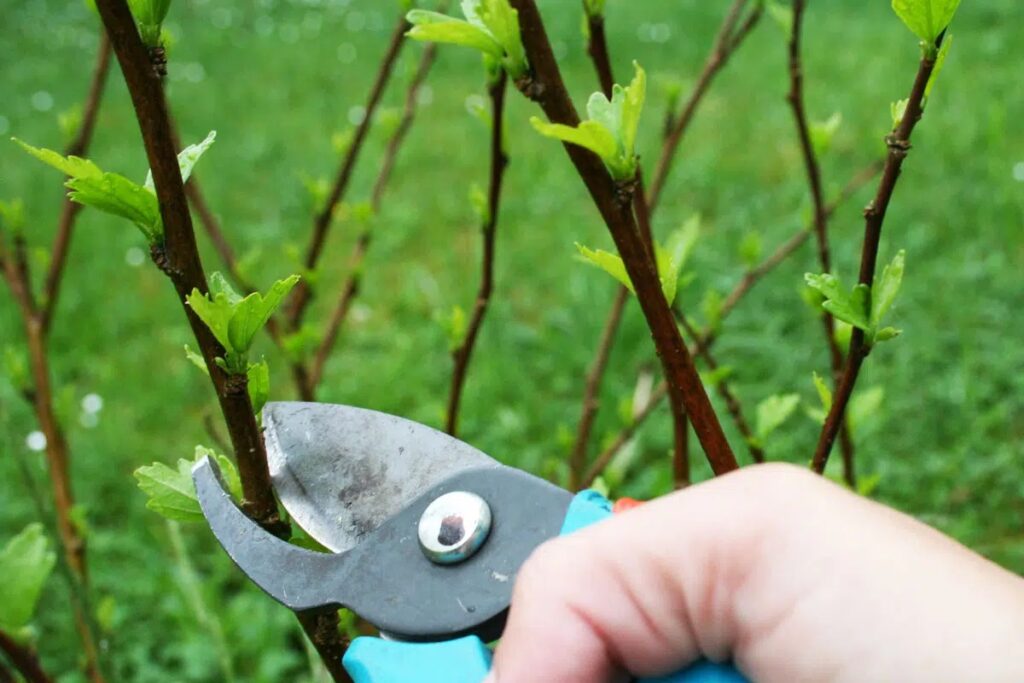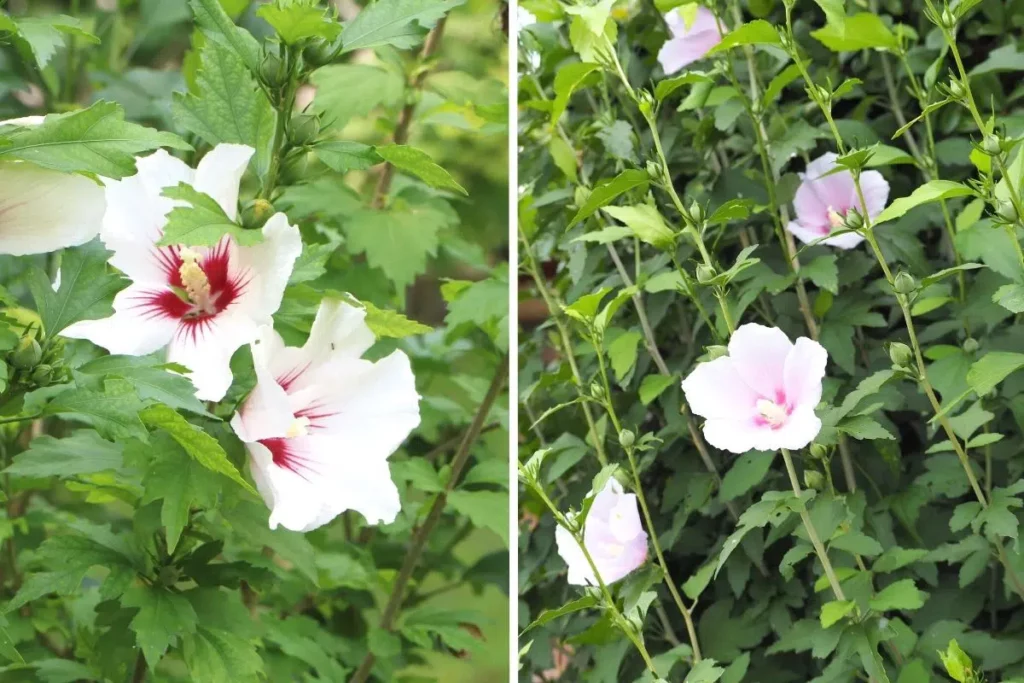Hibiscus is one of the most popular ornamental shrubs. If you keep it as a hedge, proper pruning is a significant aspect of its care. Find out when and how to prune your hibiscus hedge for best results here.
One of the most important points when pruning a hibiscus hedge is the right time. In doing so, observe the ban on pruning woody plants such as the garden hibiscus (Hibiscus syriacus) enacted in §39 of the Federal Nature Conservation Act (BNatschG). For reasons of animal and bird protection, radical pruning of hedges and shrubs is prohibited from March to September.
For the (permitted) pruning is therefore recommended early spring, even before they discover the new shoots. Usually this is a date in February. It is best to choose a day with the following characteristics, so that the marshmallow hedge will not be damaged by the weather:
- Minimum temperature: -5°C
- weather: cloudy
- ideally without precipitation
Contents
Tools and utensils
In order for you to succeed with your cut, it is important to use the appropriate equipment. The following list provides you with a comprehensive overview:
- Rose shears
- hedge trimmer
- optional: electric hedge trimmer (for large hedges)
- Gardening gloves
- Stool or stepladder
- mason’s cord
- Rake
- Rolling measure
Make preparations
To implement hedge trimming as effectively as possible, you must first stake out the height. For hibiscus hedges, annual pruning amounts to one-third. This way, not too much is removed and the hibiscus can then grow densely over the following months and produce numerous flowers. To mark out the height, simply use the mason’s twine, which is stretched along the length. To do this, you must first measure the height of the hedge with the rolling measure. Then you can stake out the top third. The following is an example of a hedge 1.5 meters high:
- total height: 150 cm
- one third is 50 cm
- subtract from the total height
- Stretch the string at 100 cm

Cut hibiscus hedge: Instructions
Once the preparations are complete, you can start pruning. If you are the owner of a large or wide hedge, it is often worth doing the pruning together with another person. The following steps will help you prune the hibiscus hedge properly:
- When pruning back and maintaining a hibiscus hedge, start directly from the top after staking out the height. If you can’t reach the top third of the hedge, use the telescoping handle.
- Always prune in small increments. That is, one layer at a time until you arrive just above the mason’s line. This will prevent you from losing too much material, which could negatively affect the vitality and shape of the hedge.
- Once you have shortened the height, now is a good time to shape. If you prefer a clean-cut hedge, trim the shoots a bit in width. However, be sure to remove only outwardly protruding branches and twigs. This will give the hedge an attractive look.
- Once the hedge has been thoroughly trimmed, you should once again check the entire hedge for shoots and branches that need to be removed. This primarily means diseased, withered, bent or torn ones. Cut these off directly at the branch or trunk with the rose shears. By doing this, you will thin out the hedge more.
- Finally, rake the green cuttings and dispose of them. Either the organic waste (in small quantities) or a recycling center is suitable for this.

Radical pruning: how to
In addition to annual maintenance pruning, it is not uncommon for old or neglected hibiscus hedges to require radical pruning. In this way, you will protect the hibiscus from persistent senescence or allow it to rejuvenate, which will have a positive effect on the abundance of flowers. After all, bald hibiscus hedges suffer greatly from loss of flowers. For radical pruning and rejuvenation use the same tools. Pruning is also carried out in February. The following instructions will guide you through the process:
- Unlike annual maintenance pruning, radical pruning cuts the hibiscus hedge by two-thirds. A 1.5 meter high hedge is thus only 50 centimeters high after pruning. Here it is also helpful to use a mason’s twine.
- Start by trimming the hedge from the top down. When doing radical pruning, feel free to be a bit rougher, as you will have to remove a lot of plant material. Cut off all shoots and branches to stimulate growth.
- The goal with radical pruning is to cut the hedge down to the main trunk. In this way, unnecessary and energy-consuming material is removed. Most importantly, the amount of shortened wood is reduced, which has a positive effect on new shoots and flower formation.
- Once you have appropriately pruned the hibiscus hedge, you can additionally cut off any diseased, broken or withered branches. Then dispose of the cuttings and maintain the hedge as usual from the new season.
Frequently asked questions
Is trapezoidal pruning a good idea for hibiscus hedges?
Yes. With a gentle trapezoidal pruning, you can improve the vitality of hibiscus hedges that often struggle with a lack of light. To do this, cut the upper part of the hedge downward at a slight angle to remove extra plant material. This will give the lower part of the hedge significantly more sun, which will have a positive effect on growth.
Are troublesome shoots allowed to be removed over the summer?
Despite the restrictions on pruning woody plants, you may carefully remove individual shoots outside of the permitted time period. This includes, for example, diseased or transversely growing ones. You just need to be careful not to disturb or injure nesting birds or resting animals in the process.


